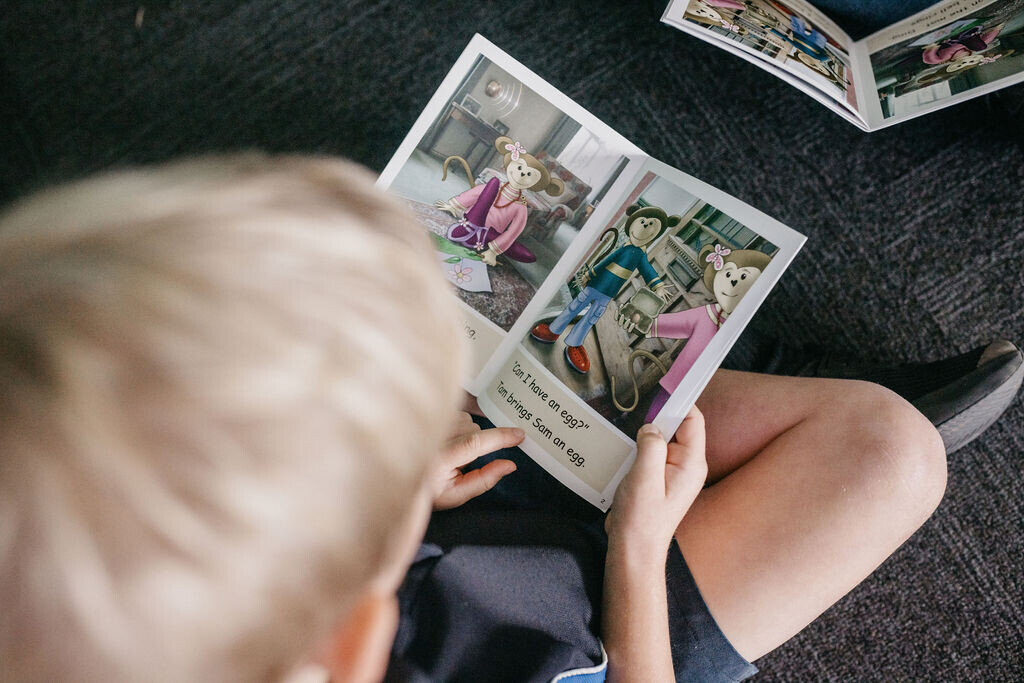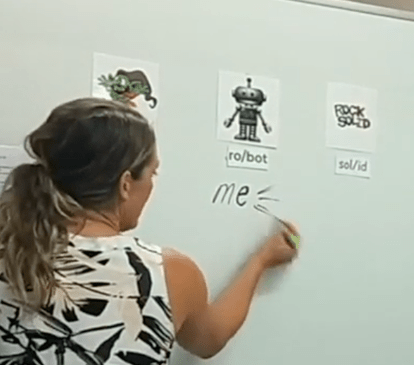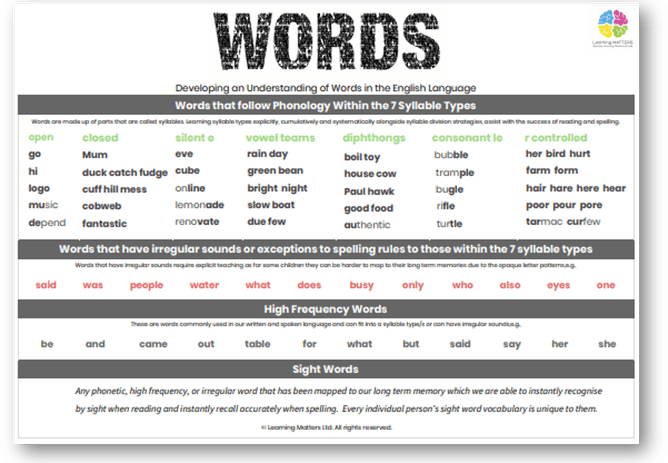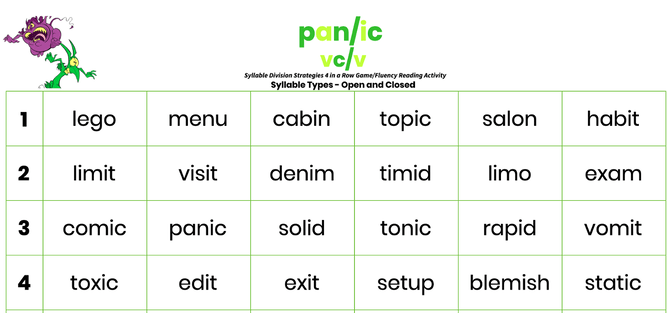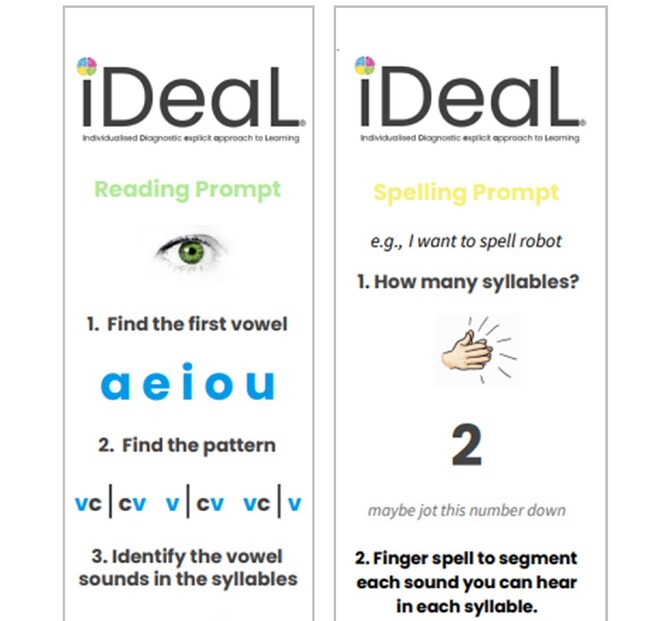Is your child able to read as well as you thought? Can they spell with relative accuracy?
I was thinking, what could parents of dyslexic children and those struggling to read focus on at home during the lockdown? So many parents (on social media) have expressed their immense surprise (and concern) at their child’s actual ability to read fluently and spell accurately.
The skill of syllable division is one we carry with us through life. It is a skill I wish I had learnt about as a classroom teacher. It is a skill that (coupled with other knowledge) enables us to read and spell. Whether we are conscious of this or not, it really is the holy grail in so many respects. What a difference it would have made to my ability to teach reading. In particular the explicit teaching of decoding (reading) and encoding (spelling) skills. Now I know better I can do better.
This lockdown time is such a great opportunity for both new learning and reviewing things, as well as assisting our children and students to secure certain skills.
If your child is attending any form of learning support, this is a crucial inclusion and one that should be revisited consistently. Review, Review, Review is so important.
For those of you new to this game of structured literacy and a current research and evidence-based approach to teaching literacy, there are a few things to highlight here. Syllable Division and Syllable Types are not exactly the same thing, but they are absolutely connected.
There are 7 syllable types. In some cases, people say 6, but, at Learning Matters, we teach 7. The image below (available on our website) beautifully illustrates how various words are made up of syllables and are then a combination of syllable types.
So, let’s go…
Before teaching syllable types and or syllable division it is necessary for us to ensure our children:
- Know that syllables are chunks of spoken words and that words are made up of syllables. This is a game-changer when spelling. We break words (we are unsure of) into syllables and attempt to spell these when we don’t have the word already mapped in our long term memory. Can your child, students tell you the syllables in cucumber? CU-CUM-BER.
- Know what the vowels are, Aa Ee Ii Oo Uu and sometimes Yy.
- Can hear the difference between long and short vowel sounds. The a in ’cat’ is a short vowel sound and the a in ‘make’ is a long vowel sound. Spelling rules and syllable types dictate whether or not the vowel sound is long or short.
- Can they read vowels (in isolation) as well as write these? If you say the short sounds ah (a), eh (e), ih (i), oh (o), and uh (u) do they accurately write the vowels, or do they discriminate some? It is important to check for discriminations between a and u, i and e. This sound articulation video may be of use to you. Maybe you need a sound pack to practise these? Persistent discrimination is common in a child with a dyslexic profile. They have difficulty mapping the correct sound to the symbol and storing this in their long term memory. Practice makes permanent, not perfect so let’s be sure to help them practice these correctly. Doing this in isolation may seem basic but it will pay big dividends.
- Know that there is (in very nearly all cases) a vowel in every syllable. November, NO — VEM — BER. Once we know about syllable types and long and short vowel sounds this helps us to break words up into manageable chunks when reading as well as when spelling.
- There are many explanations and videos out there to demonstrate syllable types. One source for younger students which is great is the selection of Nessy videos.
My colleagues also made an amazing and informative video when working with a dedicated group of parents who were learning to support their children at home. I hope the video explanation helps many of you to understand more about some of the syllable types and the importance of syllable division. Honestly, it was life-changing to learn about this stuff, to see little (and big) people’s eyes light up when they have been given strategies to crack the code is so rewarding. None of this guessing business that historically has got us nowhere and fast.
If you would like a few of the sheets that Kirsty is explaining while you are at home with your child we have loaded these onto our website for FREE, or you can go ahead and order our full SYLLABLE DIVISION kit online. It is so explicit and systematic we know you will love it.
We know our children need lots and lots of practise applying these strategies and with increasingly difficult words. The bookmark below is a great prompt for when our children or students are working independently. This is included in the SYLLABLE DIVISION kit and is a firm favourite for many parents and children as well as teachers and students across the country.
I hope this has given you a good insight into syllable types and syllable division and has given you a place to begin and or continue your learning and teaching journey.
If you are a teacher and would like to learn more about how to teach the students in your class to truly crack the code and become successful readers and spellers click here to learn more about our upcoming events.
Maybe you are a parent who is unsure if your child is on the right track? Perhaps you would like to book a half-hour consult to discuss this with one of our talented educators. You can do so here.
Have a Fab — u — lous time.
